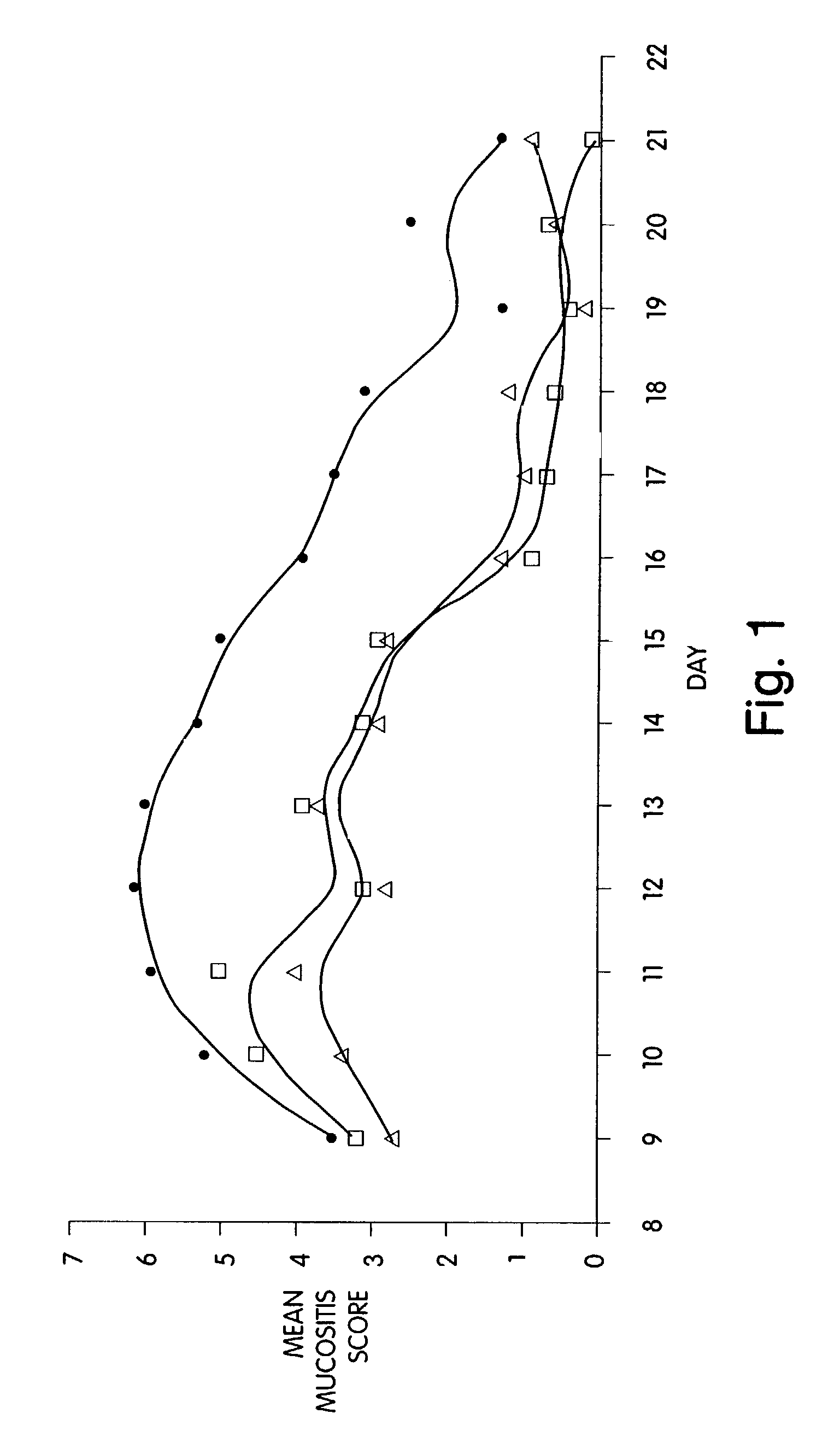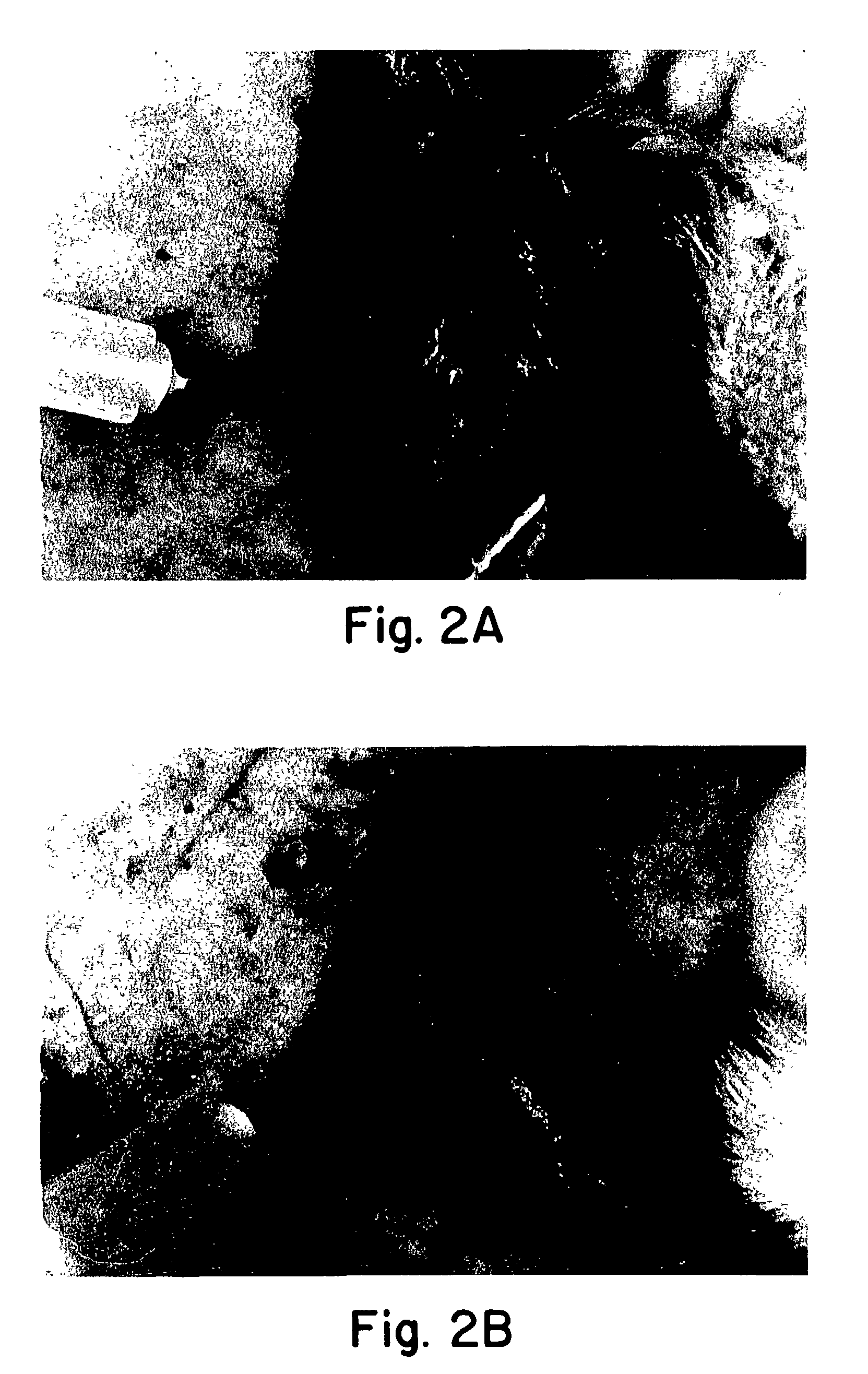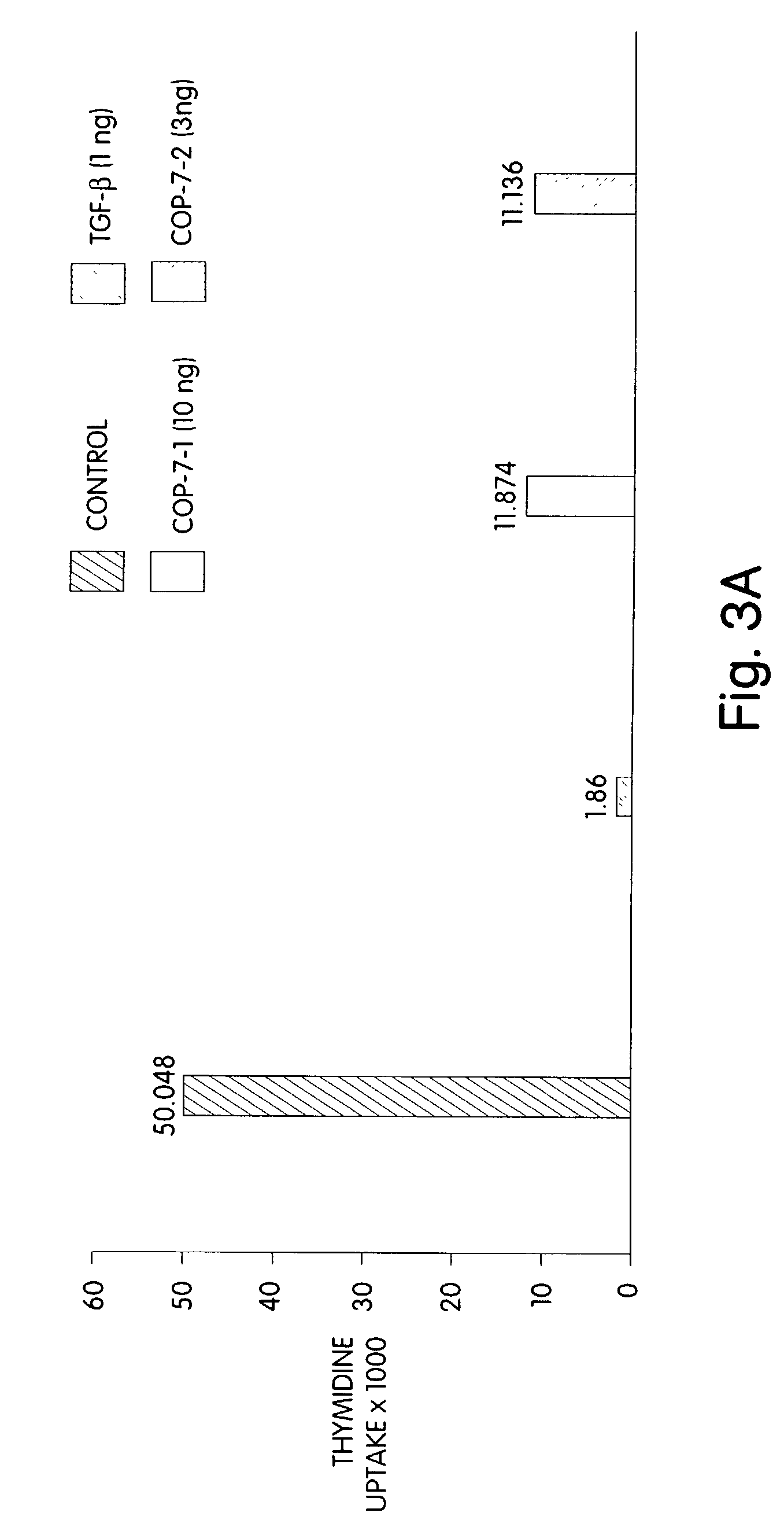Morphogen treatments for limiting proliferation of epithelial cells
a morphogen treatment and epithelial cell technology, applied in the field of gastrointestinal disorders, can solve the problems of ulcerative oral mucositis, serious and dose-limiting toxic, infective lesions, etc., and achieve the effect of maintaining the integrity of the luminal lining of the gastrointestinal tra
- Summary
- Abstract
- Description
- Claims
- Application Information
AI Technical Summary
Benefits of technology
Problems solved by technology
Method used
Image
Examples
example 1
Identification of Morphogen-Expressing Tissue
[0080]Determining the tissue distribution of morphogens may be used to identify different morphogens expressed in a given tissue, as well as to identify new, related morphogens. Tissue distribution also may be used to identify useful morphogen-producing tissue for use in screening and identifying candidate morphogen-stimulating agents. The morphogens (or their mRNA transcripts) readily are identified in different tissues using standard methodologies and minor modifications thereof in tissues where expression may be low. For example, protein distribution may be determined using standard Western blot analysis or immunofluorescent techniques, and antibodies specific to the morphogen or morphogens of interest. Similarly, the distribution of morphogen transcripts may be determined using standard Northern hybridization protocols and transcript-specific oligonucleotide probes.
[0081]Any probe capable of hybridizing specifically to a transcript, a...
example 2
Active Morphogens in Body Fluids
[0086]OP-1 expression has been identified in saliva (specifically, the rat parotid gland, see Example 1), human blood serum, and various milk forms, including mammary gland extract, colostrum, and 57-day bovine milk. Moreover, and as described in U.S. Ser. No. 923,780, the disclosure of which is incorporated hereinabove by reference, the body fluid-extracted protein is morphogenically-active. The discovery that the morphogen naturally is present in milk and saliva, together with the known observation that mature, active OP-1 is acid-stable and protease-resistant, indicate that oral administration is a useful route for therapeutic administration of morphogen to a mammal. Oral administration typically is the preferred mode of delivery for extended or prophylactic therapies. In addition, the identification of morphogen in all milk forms, including colostrum, suggests that the protein may play a significant role in tissue development, including skeletal d...
example 3
Morphogen Treatment of Oral Mucositis
[0096]Oral mucositis involves ulcerations of the mouth as a consequence of, e.g., radiation therapy or chemotherapy. The course of ulcerative mucositis may be divided into a destructive phase and a healing phase. Since the cells of the basal layer of the oral epithelium divide at a rapid rate, they are susceptible to the antimitogenic and toxic effects of chemotherapy. As a result, atrophic changes occur which then are followed by ulceration. This constitutes the destructive phase. Following ulcer formation, the lesions slowly resolve during the healing phase.
[0097]The example below demonstrates morphogen efficacy in protecting the oral mucosa from oral mucositis in a hamster model, including both inhibiting ulceration and enhancing regeneration of ulcerated tissue. Details of the protocol can be found in Sonis, et al., (1990) Oral Surg. Oral Med. Oral Pathol 69: 437–443, the disclosure of which is incorporated herein by reference. Briefly, golde...
PUM
| Property | Measurement | Unit |
|---|---|---|
| birth weight | aaaaa | aaaaa |
| weight | aaaaa | aaaaa |
| pH | aaaaa | aaaaa |
Abstract
Description
Claims
Application Information
 Login to View More
Login to View More - R&D
- Intellectual Property
- Life Sciences
- Materials
- Tech Scout
- Unparalleled Data Quality
- Higher Quality Content
- 60% Fewer Hallucinations
Browse by: Latest US Patents, China's latest patents, Technical Efficacy Thesaurus, Application Domain, Technology Topic, Popular Technical Reports.
© 2025 PatSnap. All rights reserved.Legal|Privacy policy|Modern Slavery Act Transparency Statement|Sitemap|About US| Contact US: help@patsnap.com



